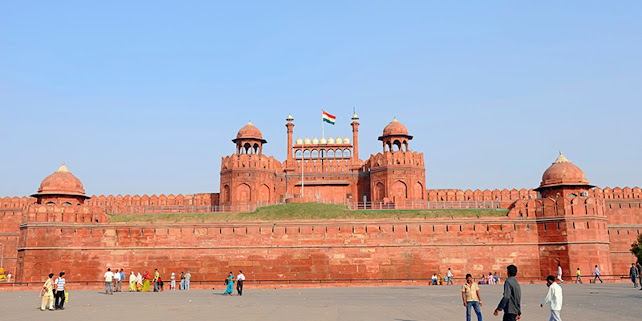Agra Fort: A Timeless Citadel of Mughal Grandeur
Introduction:
Agra Fort, a UNESCO World Heritage Site located in the heart of Agra, India, stands as an architectural
masterpiece that narrates the tale of Mughal grandeur and power. This imposing
fort, also known as the "Lal Qila" or Red Fort of Agra, has witnessed
centuries of history, serving as a strategic military stronghold, a royal
residence, and a symbol of opulence.
Historical Significance:
Commissioned by the great Mughal emperor Akbar in 1565, the Agra Fort was initially constructed for
military purposes. However, successive emperors, including Akbar's grandson
Shah Jahan, transformed it into a splendid palace, adding exquisite structures
within its red sandstone walls. The fort played a crucial role in the Mughal
Empire's administration and served as the primary residence of several
emperors.
Architectural Marvels:
The Agra Fort seamlessly
blends Islamic, Persian, and Indian architectural styles, creating a unique
fusion that reflects the cultural richness of the Mughal era. The fort's
towering walls, reaching a height of 70 feet, enclose a vast complex of
palaces, courtyards, and gardens. Notable structures within the fort include:
Diwan-i-Am (Hall of Public Audience): This grand hall, supported by rows of columns, served as a venue for public audiences. The emperor would address the concerns of his subjects and dispense justice from a raised platform.
Diwan-i-Khas (Hall of Private Audience): Reserved for private meetings, this opulent hall features a central pillar with a balcony, where the emperor would hold intimate discussions with his trusted advisors.
Sheesh Mahal (Mirror Palace): A marvel of intricate mirror work, this palace reflects the Mughal love for artistic embellishments. The walls are adorned with tiny pieces of mirror, creating a mesmerizing play of light.
Moti Masjid (Pearl Mosque): A pristine white marble mosque with three domes, built by Shah Jahan for his personal use, showcases the architectural prowess of the Mughals.
Shah Jahan's Imprisonment:
One of the most poignant
chapters in the fort's history is the imprisonment of Emperor Shah Jahan by his
own son, Aurangzeb, in the Musamman Burj, a tower overlooking the Taj Mahal.
Legend has it that Shah Jahan spent his last years gazing at the Taj Mahal, the
mausoleum he had built for his beloved wife Mumtaz Mahal.
Present-Day Agra Fort:
Today, Agra Fort stands as a
testament to India's rich cultural heritage and draws millions of tourists each
year. The site has been meticulously preserved, allowing visitors to step back
in time and marvel at the architectural genius of the Mughal dynasty. The
fort's strategic location on the banks of the Yamuna River also provides
breathtaking views of the iconic Taj Mahal, enhancing its allure.
Conclusion:
Agra Fort, with its storied
past and architectural splendor, remains an enduring symbol of the Mughal
Empire's glory. As visitors explore its corridors and courtyards, they are
transported to a bygone era, where emperors ruled with magnificence and
artistic brilliance knew no bounds. Agra Fort stands not just as a historical
relic but as a living testament to the grandeur and legacy of the Mughal
dynasty.
.jpg)






Comments
Post a Comment